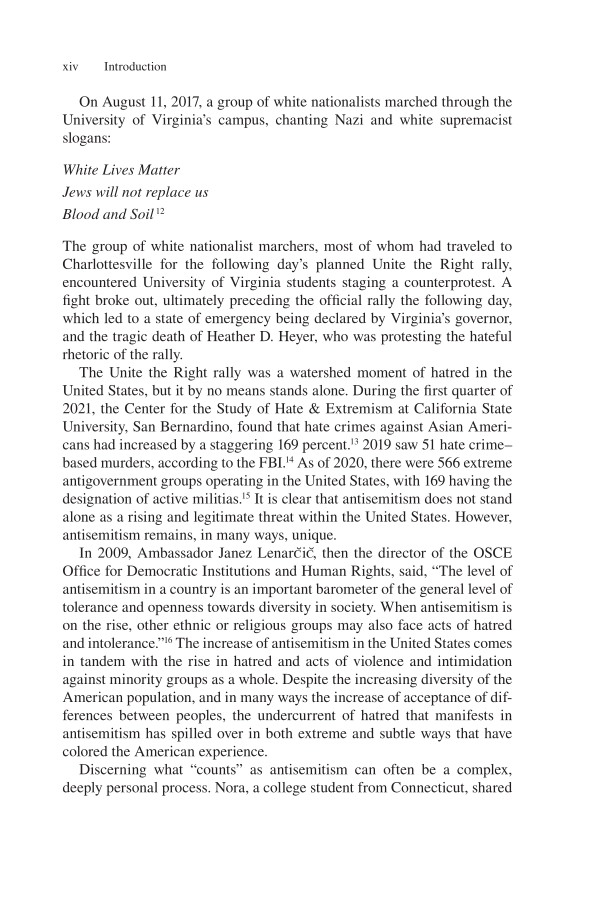xiv Introduction On August 11, 2017, a group of white nationalists marched through the University of Virginia’s campus, chanting Nazi and white supremacist slogans: White Lives Matter Jews will not replace us Blood and Soil 12 The group of white nationalist marchers, most of whom had traveled to Charlottesville for the following day’s planned Unite the Right rally, encountered University of Virginia students staging a counterprotest. A fight broke out, ultimately preceding the official rally the following day, which led to a state of emergency being declared by Virginia’s governor, and the tragic death of Heather D. Heyer, who was protesting the hateful rhetoric of the rally. The Unite the Right rally was a watershed moment of hatred in the United States, but it by no means stands alone. During the first quarter of 2021, the Center for the Study of Hate & Extremism at California State University, San Bernardino, found that hate crimes against Asian Ameri- cans had increased by a staggering 169 percent.13 2019 saw 51 hate crime– based murders, according to the FBI.14 As of 2020, there were 566 extreme antigovernment groups operating in the United States, with 169 having the designation of active militias.15 It is clear that antisemitism does not stand alone as a rising and legitimate threat within the United States. However, antisemitism remains, in many ways, unique. In 2009, Ambassador Janez Lenarc˘ic˘, then the director of the OSCE Office for Democratic Institutions and Human Rights, said, “The level of antisemitism in a country is an important barometer of the general level of tolerance and openness towards diversity in society. When antisemitism is on the rise, other ethnic or religious groups may also face acts of hatred and intolerance.”16 The increase of antisemitism in the United States comes in tandem with the rise in hatred and acts of violence and intimidation against minority groups as a whole. Despite the increasing diversity of the American population, and in many ways the increase of acceptance of dif- ferences between peoples, the undercurrent of hatred that manifests in antisemitism has spilled over in both extreme and subtle ways that have colored the American experience. Discerning what “counts” as antisemitism can often be a complex, deeply personal process. Nora, a college student from Connecticut, shared
Document Details My Account Print multiple pages
Print
You have printed 0 times in the last 24 hours.
Your print count will reset on at .
You may print 0 more time(s) before then.
You may print a maximum of 0 pages at a time.

































































































































































































